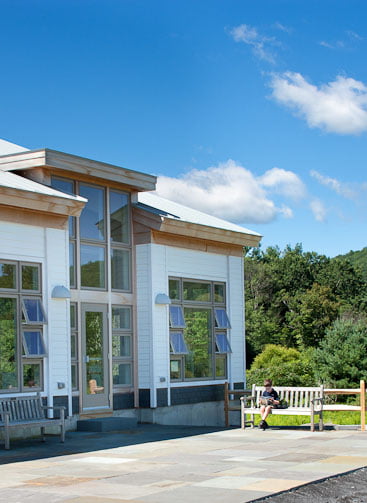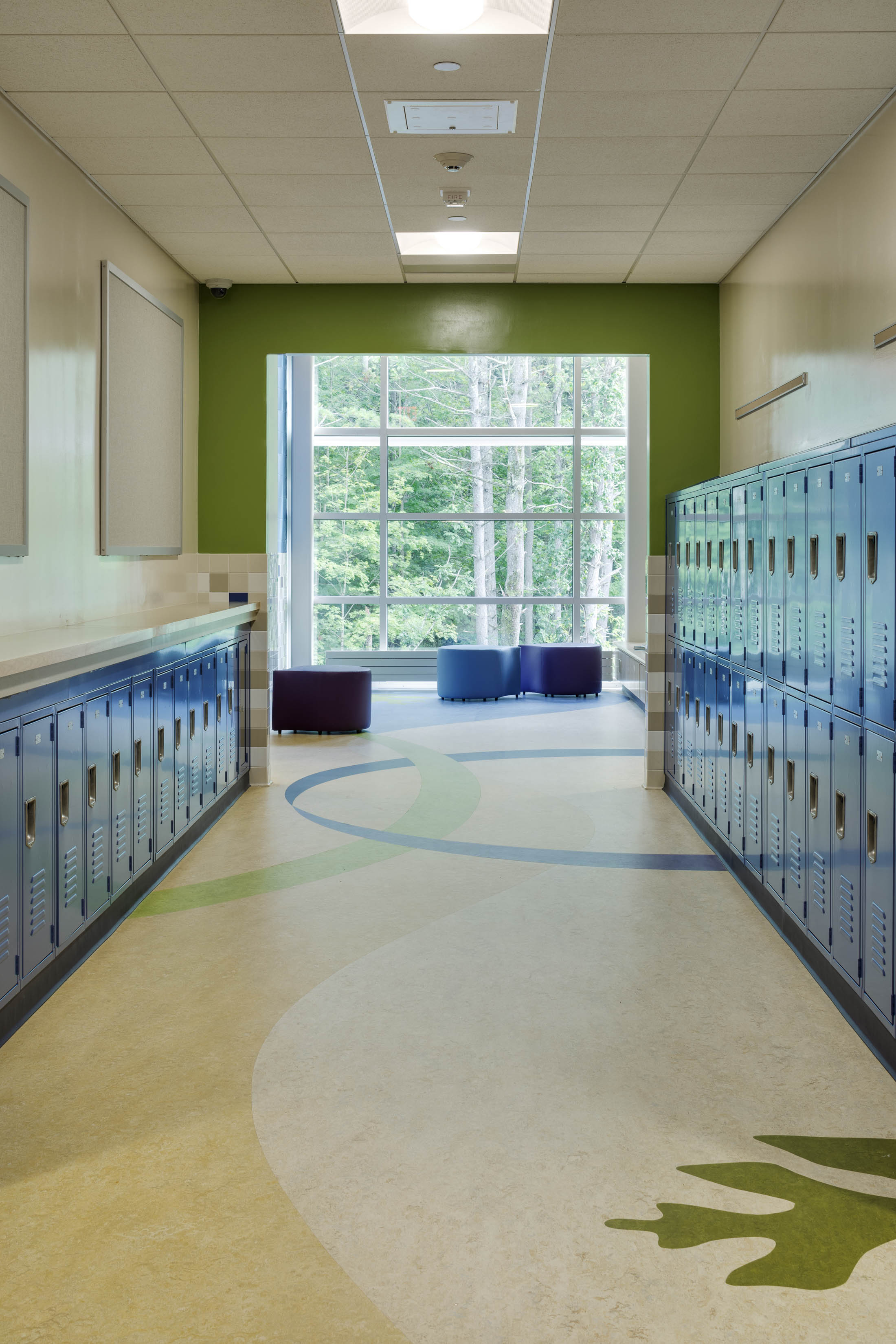Selecting Building Materials – Are You Making the Best Choices?
Today, architects have so many building material options available that are marketed and broadcasted as ‘the best’ products, but how do we determine if they really are the best? The topic is so vast that we’re not even scratching the surface in this blog post. This article targets a series of questions that architects, designers and specification writers should take into consideration as they put together the requirements for a new building.
Each time a new project comes along we have the opportunity and privilege to create spaces that provide a healthy learning environment for students. As designers in the educational market, we understand that schools are especially susceptible as students interact and come into physical contact with their environment much more than adults. (When was the last time you sat down on your office floor with a group of coworkers? – Yoga studios excluded.)
 We have a lot to think about: the educational program and what is best for the clients in terms of the shape and configuration of space, mechanical systems, how long will this structure be standing? The list is long, and the coordination efforts are sometimes very challenging. Materials and their makeup should come into play as well. Yes – something else to think about but these materials are going to be around well after the design and construction teams are gone. These materials include everything that you see, such as flooring and paint, as well as the things that you don’t usually see. It encompasses insulation used in exterior cavity wall construction and the adhesive used to seal ductwork and pipes within the building.
We have a lot to think about: the educational program and what is best for the clients in terms of the shape and configuration of space, mechanical systems, how long will this structure be standing? The list is long, and the coordination efforts are sometimes very challenging. Materials and their makeup should come into play as well. Yes – something else to think about but these materials are going to be around well after the design and construction teams are gone. These materials include everything that you see, such as flooring and paint, as well as the things that you don’t usually see. It encompasses insulation used in exterior cavity wall construction and the adhesive used to seal ductwork and pipes within the building.
There are many standardized programs that help to guide architects to use more recycled content and generally be better stewards of our design mission including, but not limited to, USGBC (LEED) and Living Building Challenge.
Here are some additional questions to think about:
• Are we meeting bare minimums in this stewardship or are we going above and beyond to ensure that building occupants are in the healthiest spaces possible?
• Are the people that create these materials that we specify working in healthy fabrication environments?
• Are the people that construct our buildings working with materials that can safely be installed?
• Are the materials that we specify recyclable, do they decompose, and can they be harmful to the environment?
• Do these materials contribute to the rapidly growing problem of hazardous materials and plastic waste?
• Generally – How do the materials that we select affect the environment long term? Is it positive or negative?
 There are resources available to us as architects to review products and determine whether they are really ‘the best’ option for current building inhabitants as well as considering what happens after those materials ‘go away’ if a building is remodeled or demolished. The recycling and reuse of plastic and other materials that we’ve always considered recyclable is not as efficient and simple as we once thought. It’s no secret that our ability, as a country, to recycle certain materials is limited and we must now ship materials to other countries. Those other countries are now limiting what we send, which means we have piles of what we thought was ‘recyclable’ material sitting in various locations throughout the country. This includes building materials as well as our daily consumable items. Where will it go? What areas will take on these loads and who will be affected? This is a problem that won’t go away until we change the way we think and make decisions about how buildings will help future generations in this endeavor.
There are resources available to us as architects to review products and determine whether they are really ‘the best’ option for current building inhabitants as well as considering what happens after those materials ‘go away’ if a building is remodeled or demolished. The recycling and reuse of plastic and other materials that we’ve always considered recyclable is not as efficient and simple as we once thought. It’s no secret that our ability, as a country, to recycle certain materials is limited and we must now ship materials to other countries. Those other countries are now limiting what we send, which means we have piles of what we thought was ‘recyclable’ material sitting in various locations throughout the country. This includes building materials as well as our daily consumable items. Where will it go? What areas will take on these loads and who will be affected? This is a problem that won’t go away until we change the way we think and make decisions about how buildings will help future generations in this endeavor.
As you start a new project, think about reviewing the life cycle of each material and the accessories that you specify. Try and take the necessary time and care to ensure that the construction of this new project will have minimal negative impacts on future generations. Think about those that work in factories to fabricate the materials as well as those that inhabit the spaces you create. Let’s help to increase the demand for better products. Environmental Product Declarations are a way to start to force manufacturers to be transparent about what goes into their products. The process has not yet been perfected, but the more we learn about better options, the better off building inhabitants will be.
Need some ideas on where to start? Here are a few links to readily available resources to help:
Materially Better provides tools and services to help designers choose healthier materials.
The Red List contains the worst in class materials prevalent in the building industry.
030 Challenge for Carbon-Neutral Buildings The 2030 Challenge asks the global architecture and building community to adopt certain targets to address climate change and be Carbon Neutral by 2030.

